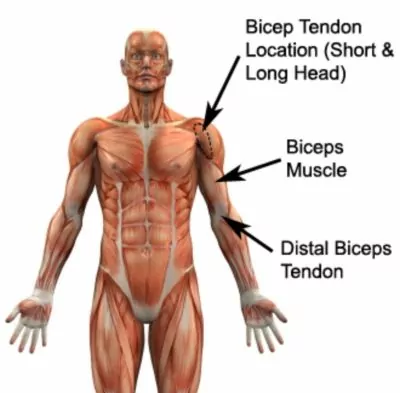Exploring Long Head of Biceps Anatomy: Origins, Functions, and Clinical Relevance
Updated:
Introduction
The long head of biceps anatomy is a crucial aspect of understanding upper arm function and addressing common shoulder-related issues. In this article, we’ll delve into the intricate details of the long head of biceps, including its origin, insertion, action, function, nerve supply, blood supply, palpation, clinical relevance, and common injuries.
Long Head of Biceps Anatomy – Origin and Insertion
The long head of the biceps brachii, commonly referred to as the long head of the biceps, originates from the supraglenoid tubercle of the scapula. From its origin, it courses through the shoulder joint and the intertubercular sulcus of the humerus before inserting onto the top of the glenoid labrum of the scapula.

Action and Function
The primary function of the long head of the biceps is to flex the arm at the shoulder joint. It also plays a crucial role in stabilizing the humeral head in the glenoid fossa during various shoulder movements, particularly overhead activities. Moreover, the long head of biceps assists in supinating the forearm (turning the palm upward), which aids in tasks like twisting a doorknob or using a screwdriver.
Nerve Supply and Blood Supply
The long head of the biceps receives its nerve supply from the musculocutaneous nerve, a branch of the brachial plexus. As for blood supply, it is primarily vascularized by branches of the brachial artery.
Palpation of Long Head of Biceps Anatomy
Palpating the long head of the biceps can be challenging due to its deep location within the shoulder joint. To locate it, flex your elbow and place your fingers gently over the front of your shoulder, just below the clavicle. Feel for the bony prominence of the coracoid process, and the long head of the biceps runs along the groove between the coracoid process and the deltoid muscle.
Clinical Relevance of Long Head of Biceps Anatomy
Understanding the anatomy of the long head of biceps is critical in diagnosing and treating various shoulder-related issues. Here are some clinical considerations:
- Tendinitis: Inflammation of the long head of biceps can result in biceps tendinitis, often caused by overuse or age-related degeneration. This condition can lead to shoulder pain and discomfort, especially during overhead activities.
- SLAP Tears: The long head of biceps is closely associated with the glenoid labrum. A superior labrum anterior to posterior (SLAP) tear can involve the attachment of the long head of the biceps, leading to shoulder instability and pain.
- Biceps Rupture: A severe injury or chronic degeneration can lead to a rupture of the long head of the biceps tendon. This may require surgical intervention, and patients may experience a “Popeye sign” due to the biceps muscle bunching up.
- Surgical Procedures: Surgeons often consider the long head of biceps during various shoulder surgeries, including repairs of the rotator cuff or labral tears, as it can impact the stability and function of the shoulder.
Useful Links:
- Biceps Tendinitis: Causes, Symptoms, and Treatment
- SLAP Tear: Understanding and Managing Shoulder Labral Tears
- Biceps Rupture: Symptoms, Diagnosis, and Rehabilitation
Long Head of Biceps Anatomy – References
- Bicep Brachii Muscle by KenHub
- Moore, K. L., & Dalley, A. F. (2006). Clinically Oriented Anatomy. Lippincott Williams & Wilkins.
- Drake, R. L., Vogl, A. W., & Mitchell, A. W. M. (2014). Gray’s Anatomy for Students. Elsevier Health Sciences.
- Neumann, D. A. (2017). Kinesiology of the Musculoskeletal System: Foundations for Rehabilitation. Elsevier Health Sciences.
In conclusion, a comprehensive understanding of the long head of biceps anatomy is essential for healthcare professionals and individuals seeking to maintain shoulder health. By knowing its origins, functions, nerve supply, and clinical relevance, we can better diagnose and manage common shoulder-related issues, ultimately improving the quality of life for those affected.

Link to this Page
If you would like to link to this article on your website, simply copy the code below and add it to your page:
<a href="https://physioadvisor.com.au/exploring-long-head-of-biceps-anatomy-origins-functions-and-clinical-relevance”>Exploring Long Head of Biceps Anatomy: Origins, Functions, and Clinical Relevance – PhysioAdvisor.com</a><br/>Learn about long head of biceps anatomy including origin, insertion, action, nerve supply, blood supply, palpation, common injuries & more...
Return to the top of Exploring Long Head of Biceps Anatomy: Origins, Functions, and Clinical Relevance.
